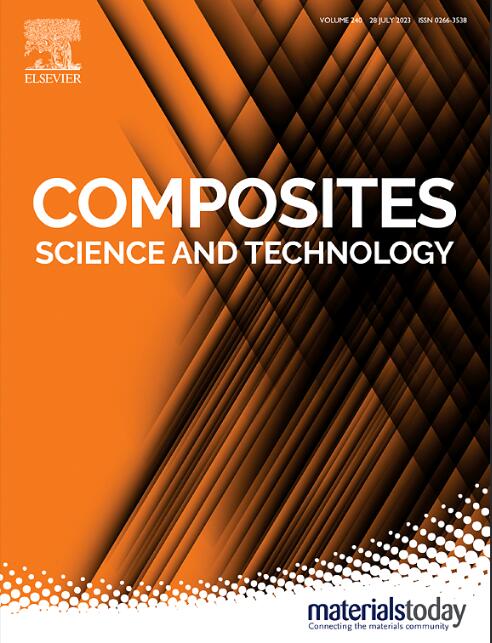Unidirectional porous Si3N4 reinforced epoxy composites with high thermal conductivity and low thermal expansion
IF 8.3
1区 材料科学
Q1 MATERIALS SCIENCE, COMPOSITES
引用次数: 0
Abstract
Efficient heat dissipation via anisotropic thermal management materials (TMMs) has become increasingly urgent as the microelectronic devices develops towards miniaturization and high integration. However, traditional polymer/ceramic composites suffered from the drawbacks of limited thermal conductivities (TCs) and high coefficients of thermal expansion (CTEs) due to the random dispersion of ceramic grains in the polymer matrices, which resulted in the deteriorated life span of devices. Although recent works successfully constructed anisotropic thermal networks in the polymer-based composites, the connectivity of the ceramic grains was inferior, leading to the high contact thermal resistance (Rcf) and less constraint of the thermal expansion of polymer matrices. Therefore, achieving high TC while decreasing the CTE of the polymer-based TMMs was still a great challenge. In this work, a novel technique of freeze casting combined with combustion synthesis was employed to fabricate unidirectional porous (UP) Si3N4 ceramics, which were then utilized as the reinforcements for epoxy (EP). The rigid and anisotropic UP Si3N4 skeletons were successfully constructed in the obtained composites, leading to the decreased Rcf and enhanced constraint of the thermal expansion of EP. As a consequence, the TCs in the directions parallel and perpendicular to the channels achieved 20.54 W m−1 K−1 and 12.68 W m−1 K−1, respectively, at a Si3N4 loading of 53.8 vol%. The corresponding CTEs in the above two principal directions were only 11.53 × 10−6 K−1 and 4.98 × 10−6 K−1, respectively. The composites displayed excellent heat dissipation performance in both experimental and simulation results, indicating promising application prospect as TMMs for microelectronic devices.

具有高导热、低热膨胀的单向多孔Si3N4增强环氧复合材料
随着微电子器件向小型化和高集成化方向发展,利用各向异性热管理材料(TMMs)实现高效散热变得越来越迫切。然而,传统的聚合物/陶瓷复合材料由于陶瓷颗粒在聚合物基体中的随机分散,存在热导率有限和热膨胀系数高的缺点,导致器件寿命下降。虽然最近的研究成功地构建了聚合物基复合材料的各向异性热网络,但陶瓷颗粒的连通性较差,导致聚合物基体的接触热阻(Rcf)较高,热膨胀约束较少。因此,在降低聚合物基TMMs的CTE的同时实现高TC仍然是一个很大的挑战。本文采用冷冻铸造与燃烧合成相结合的新技术制备了单向多孔Si3N4陶瓷,并将其用作环氧树脂(EP)的增强材料。在复合材料中成功构建了刚性和各向异性的UP Si3N4骨架,降低了Rcf,增强了对EP热膨胀的约束。结果表明,当Si3N4的体积分数为53.8%时,通道平行方向和垂直方向的TCs分别达到20.54 W m−1 K−1和12.68 W m−1 K−1。两个主方向对应的CTEs分别为11.53 × 10−6 K−1和4.98 × 10−6 K−1。实验和仿真结果表明,复合材料具有良好的散热性能,在微电子器件中具有广阔的应用前景。
本文章由计算机程序翻译,如有差异,请以英文原文为准。
求助全文
约1分钟内获得全文
求助全文
来源期刊

Composites Science and Technology
工程技术-材料科学:复合
CiteScore
16.20
自引率
9.90%
发文量
611
审稿时长
33 days
期刊介绍:
Composites Science and Technology publishes refereed original articles on the fundamental and applied science of engineering composites. The focus of this journal is on polymeric matrix composites with reinforcements/fillers ranging from nano- to macro-scale. CSTE encourages manuscripts reporting unique, innovative contributions to the physics, chemistry, materials science and applied mechanics aspects of advanced composites.
Besides traditional fiber reinforced composites, novel composites with significant potential for engineering applications are encouraged.
 求助内容:
求助内容: 应助结果提醒方式:
应助结果提醒方式:


